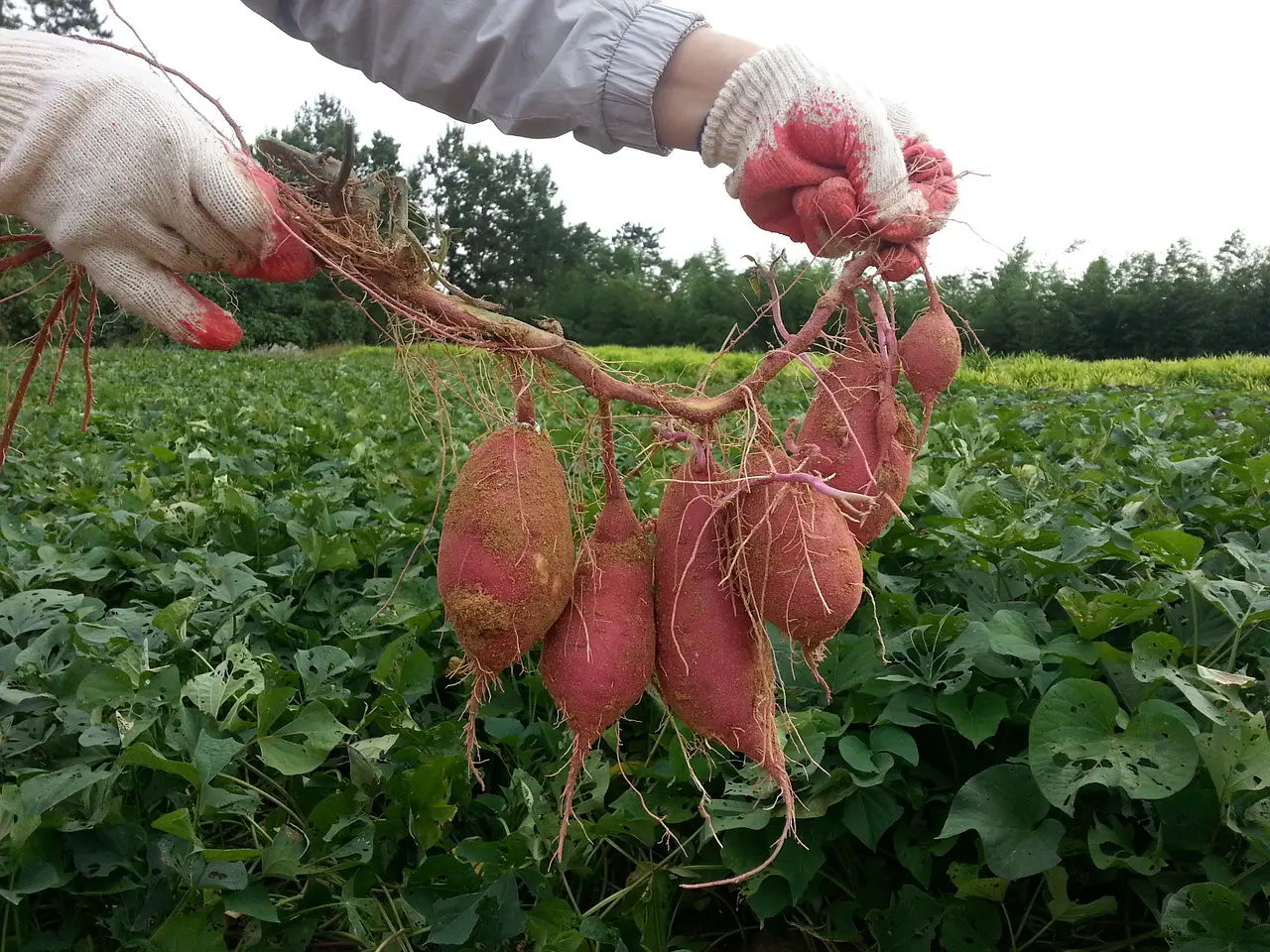Last Updated on April 16, 2024 by Real Men Sow
Growing sweet potatoes (Ipomoea batatas) brings some of the most beautiful products to the local organic market during February. Unlike other crops, sweet potatoes’ taste gets better in storage. Sweet potato tubers start to sprout after their dormancy period is over. This makes it a great spring project to grow sweet potatoes from slips (rooted cuts).
What Month Do you Grow Sweet Potatoes?
You might be asking, isn’t sweet potato a tropical crop that is hard to grow in cooler climates? Both yes and no. In recent field trials in chilly New Hampshire, varieties like ‘Beauregard’ and ‘Covington’ grew nice tubers up to three to four per plant. This is with the help of a black plastic mulch that is used to warm the soil. These and other types have a high success rate of growing under plastic-covered tunnels here in the UK . However, sweet potatoes grown in warm climates will yield more than those grown in cooler ones. Gardeners can harvest up to eight tubers from a sweet potato plant in warmer climates.
Growing Sweet Potatoes in Cool Climate
Even though some people have a climate that is a bit cool for sweet potatoes, they still grow them due to them being tasty, easily stored, healthy, and yielding so much during warmer summers. Since they shade the soil, suppressing the growth of common weeds, when their vines form a tangle of foliage, they need only a little attention.
Guide to Growing Sweet Potatoes
Slips are rootable cuttings that sweet potatoes can grow from. An average of 3 to 5 slips can be made by one sweet potato. Grow sweet potatoes by placing a tuber, sprouting end pointing up, diagonally in a bed of moist compost. For the tuber to quickly grow vines, you must keep it warm and slightly moist. Once the slips are 6 inches or 15 cm long, they can now be moved to the garden or personal containers if it is too cold outside. If you are planning to grow many sweet potatoes, you can buy a sweet potato slip bundle or you can use the bucket of the sand method. To do the bucket of sand method, you must fill half a bucket with moist sand and place a few sweet potatoes, half-buried, in the sand. You must keep it in a warm place, and it will grow many slips in just four to six weeks.
Telling which end is the sprouting end isn’t always easy. If you cannot tell which end is which, you can simply put the tuber in a warm place for two weeks until buds emerge. Then you will know which end is the sprouting one.
How to Handle and Grow Sweet Potato Plants
Sweet potato slips grown indoors should gradually be exposed to strong summer sunlight over a period one to two weeks. This task is easiest if the mother plants are placed in warm, filtered shade. The slips and the lower leaves are removed before planting. The slips are placed diagonally in well-moistened, trenches. These are then filled with water so that the top two leaves do not show at the surface. The slips will grow roots as long as the soil remains moist. Six weeks later, the sweet potato vines will grow rapidly and cover the ground in dense foliage.
What is the Best Way To Grow Sweet Potatoes?
Even sweet potatoes that are the fastest-growing should be allowed to mature for at least 90 days before harvesting. Because of the possibility of skin diseases, it is important to dig sweet potatoes before soil temperatures drop too low. Sweet potato varieties tend to set tubers closer to their primary growing crowns. Others may allow tubers to grow further away. To minimize broken tubers, start digging at the end of the row if you’re not sure.
How Long to Store Sweet Potatoes?
Two to three weeks is required for fresh sweet potatoes to be stored in warm conditions. The skin will heal and the flesh becomes more sweet and nutritious. After curing, the process continues at cool room temperatures for the first three months. Sweet potatoes stored in winter are usually the best.
Sweet Potato Varieties
The orange flesh is the fastest-growing variety of sweet potatoes. However, white, yellow, or purple flesh varieties are great options for those with a long growing season. Although sweet potato varieties come in a variety of textures and flavors, it is generally true that orange-fleshed sweet potatoes cook up moist, and white sweet potatoes become incredibly creamy. Purple sweet potatoes, on the other hand, are dry and starchy like regular potatoes. These and other sweet potatoes are worth looking out at your local farmers’ market.



